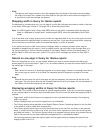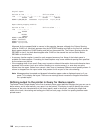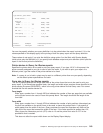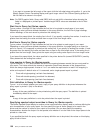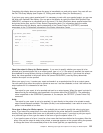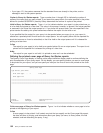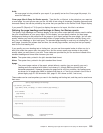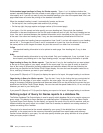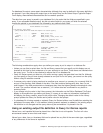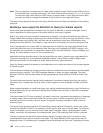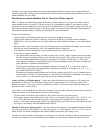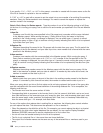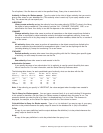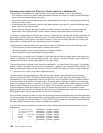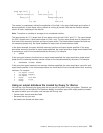
For database file output, some report characteristics (although they may be defined in this query definition)
are ignored. If you later change the output type or the output form on the Select Output Type and Output
Form display, these defined characteristics can be used as specified.
The data from your query is saved in your database file in the order that the fields are specified in your
query. If you requested detailed output, but did not select fields for your query, all fields for selected
records are placed in your database file, followed by any defined result fields.
Define Database File Output
Type choices, press Enter.
(The printed definition shows the output file record layout.)
File......... QQRYOUT Name, F4 for list
Library ...... QGPL Name, F4 for list
Member........ *FILE Name, *FIRST, *FILE, F4 for list
Data in file..... 1 1=New file, 2=Replace file
3=New member, 4=Replace member
5=Add to member
For a new file:
Authority ..... *LIBCRTAUT *LIBCRTAUT, *CHANGE, *ALL
*EXCLUDE, *USE
authorization list name
Text........ ______________________________________________
Print definition... N Y=Yes, N=No
F3=Exit F4=Prompt F5=Report F10=Process/previous
F12=Cancel F13=Layout F18=Files
The following considerations apply when you define your query to put its output in a database file:
v Unless you use lists to select them, the file and library names that you specify on this display are not
checked at this time for their existence or for your authority to use them. These items are checked when
the query is run. The file is also checked to ensure that it is a database file.
v Query for iSeries cannot put data into a file while running a query that gets data from that file. Although
you can specify a file you have already selected as an input file for this query, you cannot run the query
without using file selection override.
v If summary-only output is being used and an overflow error occurs in a summary for a numeric field, 9s
are put in the summary field instead of the data. If the field contains floating-point data, then 0’s are
used instead. If the field contains date or timestamp data, then the highest possible chronological value
is used. The overflow indicator has an asterisk (*) in it when data has overflowed for any break or
summary fields.
v If you change only the value in the Library prompt, the information on the Define Database File Output
display is not saved when you define your query. If a query is run when no information is defined for
this display, the library used for output is the profile value. Changing the default value for the Library
prompt updates the Query for iSeries user’s profile value for that prompt.
v If a database file is being created or replaced, Query for iSeries builds a new file definition matching the
attributes of the query data. If a file member is being created, replaced, or added to, the existing output
file definition is not changed and the query data may be converted as it is placed in the file.
Using an existing output file definition in Query for iSeries reports
Values from a null-capable field can be placed into a field that is not null-capable. The first null value
encountered causes an error that ends output.
Values from a date, time, or timestamp field can be placed into any field of the same data type, regardless
of any differences in the format or separator.
Chapter 13. Selecting output type and output form in Query for iSeries reports 155



